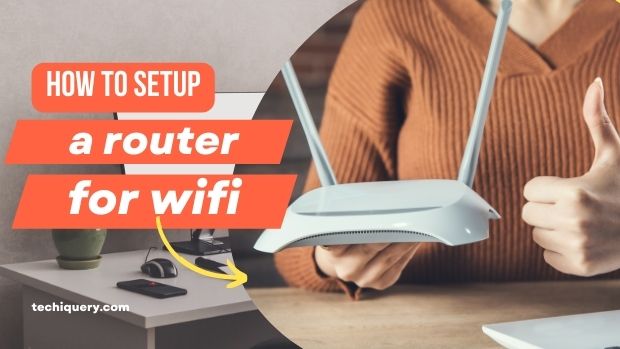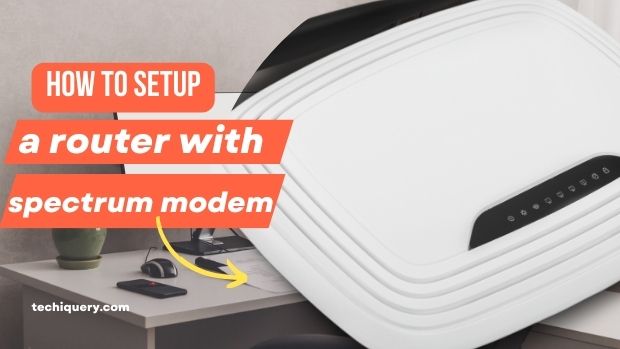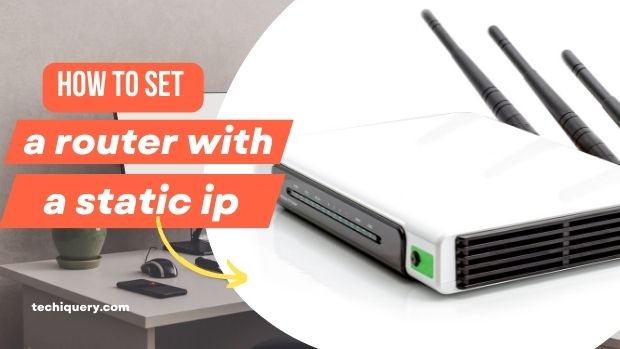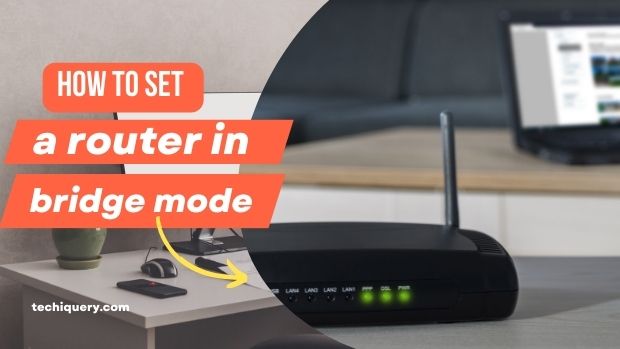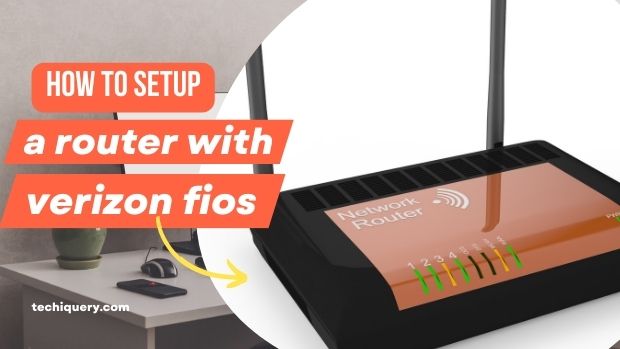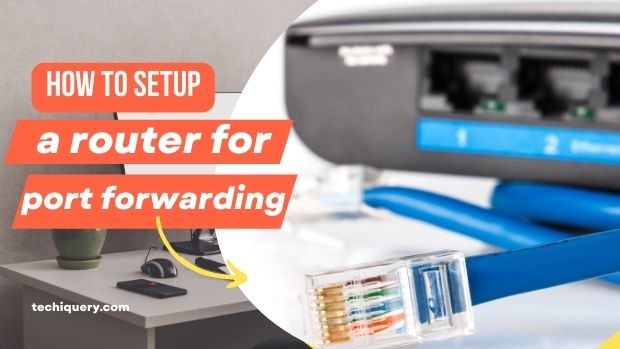How to setup a router for wifi
“How to setup a router for wifi”. Setting up a router can be a daunting task, but with the help of this guide, it will be a breeze. We’ll walk you through the basics of setting up your router, from selecting the right model to connecting to the internet. Once everything is set up, you’ll be able to surf the web without any problems!
Contents
How does a router work?
A router is a device that can help you connect to the internet. It’s like a small computer that helps you connect to other computers and devices on the network. Routers can be different shapes and sizes, but they all have one thing in common: They help you connect to the internet. Routers come in different types, including wireless routers and wired routers. Wireless routers use antennas to send and receive signals over the air, while wired routers use cables to connect devices directly to the router.
How to setup a router for wifi
Setting up a router for wifi can be a daunting task for the novice user, but with a few simple steps and a little bit of knowledge, you can get your network up and running in no time.
The following are some tips on how to set up your router:
- Determine your router’s type. There are three main types of routers: broadband routers, home office routers, and gaming routers. Broadband routers are intended for use with broadband Internet connections (typically speeds above 50 Mbps). They provide features such as simultaneous dual-band wireless access, VPN pass-through, and network QoS (quality of service). Home office routers are designed for use in homes, small offices, and other residential locations. They often have more advanced capabilities than broadband routers and include features such as Guest Networking, which allows users to share an Internet connection with visitors without affecting their own bandwidth usage. Gaming routers are specifically designed for gamers and offer features such as high-end wireless antennas, multiple Gigabit LAN ports, and anti-spy/anti-virus protection.
- Decide what type of network you want to set up. If you only plan onusing your router for basic networking needs, a basic home office router will do the trick. If you want to install additional devices on your network (such as a smart TV or gaming console), a broadband router is the best option.
- Compare prices and features. Once you’ve determined what type of router you need, you can begin to compare prices and features. Certain features, such as 5-GHz wireless capability or gigabit Ethernet ports, are more expensive than others. It’s important to consider all of your needs before making a purchase.
- Download the appropriate software. Before you can start configuring your router, you’ll need the appropriate software. Many routers come with installation CD/DVDs or USB drives that include the necessary software.
- Connect your devices. Next, connect your devices to the router’s ports (if applicable). Most routers have two LAN ports and one WAN port; use one of these ports to connect your computer to the network and the other port to connect any other devices that you’ll be using on the network. For example, if you have a gaming console connected to one of your LAN ports and a smart TV connected to another port, then you’re good to go!
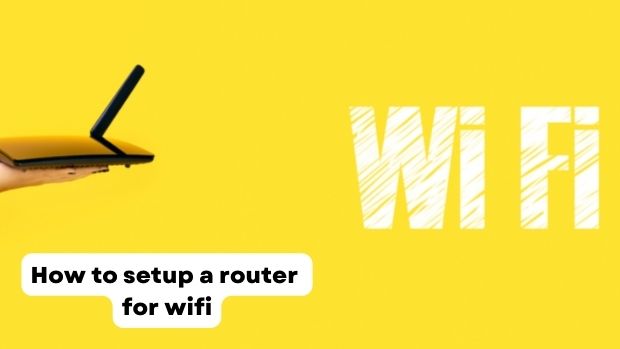
What are the different functions of a router?
When it comes to routers, there are many different functions that they can perform. Routers can be used to provide connectivity for devices in your home or office, manage traffic, and protect your network. Here we will go over the different functions of routers and explain how to setup one for wifi.
When setting up a router for wifi, the first thing you need to do is decide what type of router you have. There are two main types of routers: wireless and wired. Wireless routers use radio waves to connect devices to the internet, while wired routers use cables to connect devices. Wired routers are typically more stable and secure than wireless routers. However, if you only need a wifi connection for certain devices in your home or office, a wireless router may be more suitable.
Once you have determined which type of router you have, the next step is to decide what kind of connection you want your router to provide. Routers can provide access to the internet, share files and printers between devices in your home or office, or act as a bridge between your computer and other devices in your home or office.
The next step is to determine what ports on your computer need to be open in order for your router to function. Routers typically require a port open in order to function, but some routers have ports that can be closed off. For example, routers that are designed to share files between devices usually have a port that allows you to share files with other devices on your network.
Once you have determined what ports your router needs and which devices you want to connect to the internet, the next step is to configure your router. This involves setting up an account with your router’s provider, choosing a password, and configuring your router’s settings.
Finally, you will need to install the correct software on your computer in order for your router to function. This software is usually included with the router or can be downloaded from the manufacturer’s website. After installing the software, you will need to configure it for use with your router.
In summary, a router provides connectivity for devices in your home or office, manages traffic, and protects your network from attacks.
Learn more about
How To Create A Team Meeting In Outlook
How to setup a vpn on android
How to setup a router
How to setup a router for gaming
Tips for better wifi connectivity
Setting up a router for wifi can be a daunting task, but by following these tips you will achieve better signal strength and less lag times.
- Choose the right router. A powerful router will help to boost your signal, but make sure that it is also compatible with your internet provider’s network. If you have a cable subscription, look for routers that support DOCSIS 3.0 or 3.1.
- Assign an IP address to your router. This is important because your devices will need to know how to find the router when they are connected to the internet. You can assign an IP address automatically, or you can manually enter the IP address into each device that you want to connect to the router (for example, your computer, phone, and tablet).
- Turn on security features. You should enable password protection, firewalls, and anti-virus software on your router so that unauthorized users cannot access your devices or data packets.
- Check the wireless signal strength. To test your wireless signal strength, open an internet browser and type in “WiFi test” (or something similar) into the search bar. Themore bars that appear, the stronger the signal.
- Optimize your device settings. If you have a laptop or desktop computer, try to adjust your settings to increase your wifi connection speed. You can also try to disable any unnecessary software or applications that are using up bandwidth.
How to configure a router for wifi
Setting up a router for wifi is an easy process that can help you improve your connectivity in your home or office. By following these steps, you can configure your router to optimize your network settings and improve your internet connection.
First, you will need to find the router’s IP address. You can usually find this information on the router’s documentation or online. Once you have found the IP address, you can open a web browser and type in the address into the address bar. This will take you to the router’s main screen.
Now, you will need to choose your network settings. The first thing you should do is select your wireless network name and password. Make sure to remember these details because you will need them later when configuring your computer for wifi. Next, you will need to select the security settings for your network. You can choose either WPA or WEP security options. Finally, you will need to enter your modem’s IP address and port number. If you have a static IP address, enter that information here; if not, click “Dynamic Configuration” and enter your ISP’s IP address in lieu of a static IP address. Once all of these settings are complete, click “Apply.”
Now, you will need to connect your computer to the router’s wifi network. Open your computer’s internet browser and type in the router’s IP address into the address bar. This will take you to the router’s login screen. Once you are logged in, enter your network name and password into the login screen. Your computer should now be connected to the router’s wifi network.
Troubleshooting a router
If you’re having trouble setting up a router for wifi, there are a few things you can do to try and diagnose the problem. The first thing to do is to clear your cache and cookies on your browser, and then try connecting again. If that doesn’t work, you can try resetting your router (just hold down the reset button for a few seconds). If that still doesn’t work, you can try unplugging everything from the router and plugging it back in, or reinstalling the firmware. Finally, if none of these solutions work, you can contact the manufacturer of your router for help.
What are the benefits of setting up a router for wifi?
A router is a great tool to have if you want to improve your home or office wifi signal. Here are the benefits of setting up a router for wifi:
- routers can boost your wifi signal in areas that are weak or spotty.
- routers can also help improve your internet connection by acting as a Gateway and filtering out unwanted traffic.
- routers can also be used as media extenders, allowing more devices to share the same internet connection.
Conclusion
If you’re looking to set up a router for your home or office, there are a few things that you’ll need to do in order to get started. In this article, I will walk you through the steps necessary to setup your router and connect it to the internet. Hopefully, this guide will help make the process as easy as possible for you! Visit for more information. https://techiquery.com

